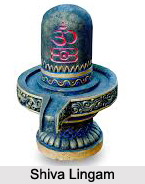 Nilakanthesvara Shiva Temple dedicated to Lord Shiva is situated on the western embankment of the Bindusagar tank in Orissa. The temple is built on the left side of the lane carved out of the road that stretches from Kedar Gouri chowk to Vaita?a deu?a in Bhubaneswar. The temple had been rebuilt on the remnants of an earlier shrine.
Nilakanthesvara Shiva Temple dedicated to Lord Shiva is situated on the western embankment of the Bindusagar tank in Orissa. The temple is built on the left side of the lane carved out of the road that stretches from Kedar Gouri chowk to Vaita?a deu?a in Bhubaneswar. The temple had been rebuilt on the remnants of an earlier shrine.
Legend of Nilakanthesvara Shiva Temple
`Nilakantheswar` is one of the several names of Lord Shiva. The word Nilakantheswar means `someone whose throat is blue in colour.` It has been derived from two words `Nila` and `Kantha`. In Oriya language `Nila` means `blue` and `Kantha` means `throat`. According to a legend during `Samudra Manthan` i.e. churning of the ocean several objects were drowned in the river. Lord Shiva is said to have drunk the poison from the ocean to save the world from its effect. The poison remained in this throat which turned blue in colour. Hence, he is known as Nilakantheswar.
Architecture of Nilakanthesvara Shiva Temple
Nilakanthesvara Shiva Temple was built in the 10th century according to the Kalingan architectural design. Sandstone has been chiefly employed for construction of the temple. The interior of the temple is made of dry masonry with cement plaster. The temple facing the eastern side enshrines the deity is a circular yoni pitha with a Shivalingam made of chlorite. The Shivalingam has been installed on the northern side of the temple.
The temple is adorned with a square vimana of 4.30 square metres. The frontal porch of the shrine measures 4.90 metres. The vimana is a pidha deul consisting of a bada, gandi and mastaka. From the pabhaga to the mastaka the temple measures almost 4.55 metres in height. The bada consists of threefold division and measures 2.05 metres in height. The pabhaga measures 0.63 metres, the jangha is of 1.18 metres and the baranda measures 0.24 metres. The temple has been kept simple excluding the Udyota simha above raha pagas of each wall that has been decorated elaborately. Three horizontal tiers have been used to build the gandi measuring 1.50 metres. The mastaka comprises of ghanta, khapuri, beki, amlaka, kalasa and trisula. The Jagamohana has been erected in front of the vimana on the eastern side of the wall of the temple.
Nilakanthesvara Shiva Temple is enclosed by a compound wall measuring 9.50 metres in length, 1.48 metres height and 0.40 metres thick. It is made of laterite and has two entrance doors. The temple has been decked with raha niches measuring 1.47 metres in height, 0.32 metres wide and 0.12 metres deep. An idol of a four armed Lord Ganesha has been erected in the raha niche on the southern side. The image stands on top of a lotus pedestal in tribhanga pose. With his upper right hand he holds a nagapasa and his lower right hand is in varada mudra. The other two hands are broken. A four armed idol of Lord Kartikeya standing over a lotus pedestal is built in the western raha niche. With his lower left hand he holds a damaru and with his upper left hand he holds a cock. The upper right hand is kept on the beak of his mount peacock and the lower right hand is broken. The raha niche on the northern side houses the idol of Parvati with a four arms. With her lower left hand she holds a conch shell and with her lower right hand she holds a nagaphasa. With her upper right hand she holds a baranda while with her upper left hand she holds a mace.
Apart from these structures the temple has been further embellished with decorative doorjambs that measure 1.70 metres in x 0.90 metres. An image of Gajalaxmi seated in lalitasana is erected in the lintel. The deity is four armed and carries a lotus in her left arm. Her right arm depicts varada mudra.
Nilakanthesvara Shiva Temple celebrates the festival of Sankranti and Shivaratri on a grand scale. Devotees from far of places visit the temple during the festive seasons. The temple can be reached from Keonjhar by road. One can travel in a private or hired vehicle to reach there. Keonjhar is connected to all major cities of Orissa through roads and railways.





















